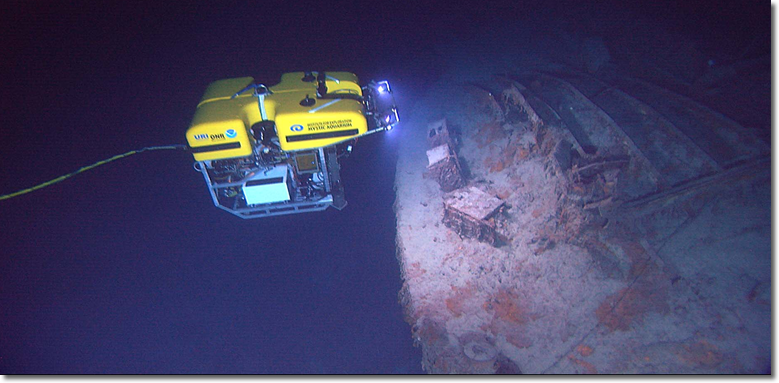Marine Biology Today

Today, many universities and other institutions utilize ocean research vessels and shore-based laboratories to study the ocean. Advances in technology have allowed for the development of high-tech submarines can that descend to the deepest parts of the ocean and satellites are providing new and revealing information about the oceans from above, proving a large scale view. Submarines can now be operated remotely or autonomously using robotic technology.
Despite the ever-increasing advances in technology, we still know less about our own oceans than we do about our moon and some of the depths of the universe. Much remains to be learned about our oceans and its relationship with our daily lives. Human activity is having a greater and greater impact on our oceans and in turn, changes in our climate and food sources are occurring at alarming rates. As such, the need to continue the study of the ocean remains as important as ever.
About the Image:
ROV Hercules investigating boxes on the stern of RMS Titanic more than two and a half miles deep during NOAA’s 2004 expedition to the wreck site. NOAA’s new ship will have a similar ROV operating on a tether of about 90 feet from an ROV tow sled positioned deep in the ocean. Source: IFE/ URI /NOAA
NOAA'S NEW SHIP TARGETS PATH-FINDING OCEAN EXPLORATION AND RESEARCH
Click to visit the news article: NOAA
